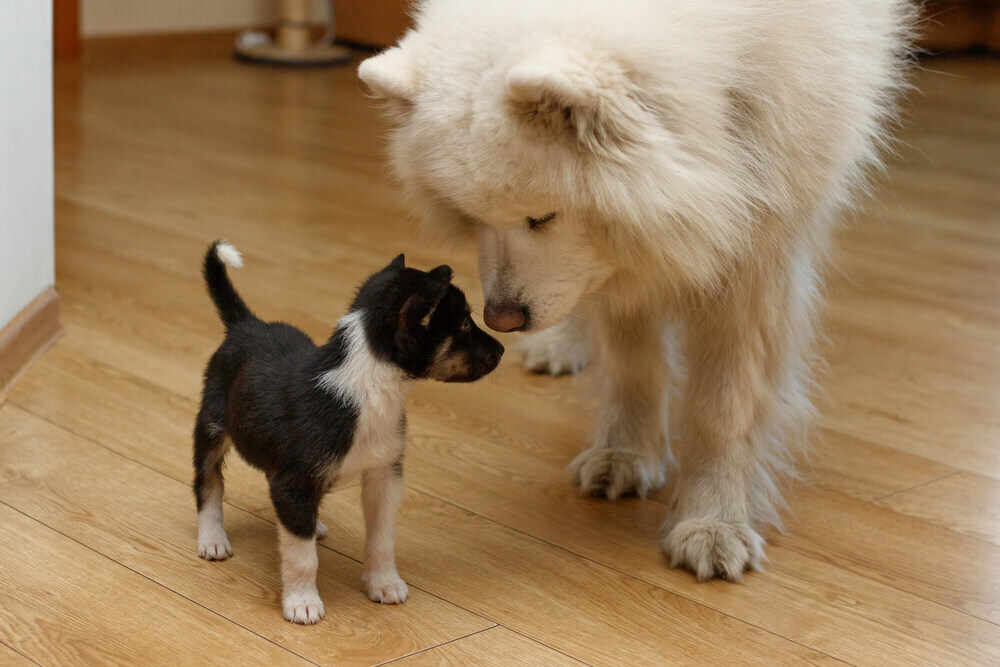In this article
Dogs, our loyal companions, often seem to understand us better than we understand them. When we speak to them in English, they respond with tail wags, barks, specific behaviors, and attentive gazes. But do they truly comprehend the intricacies of our language, or are they simply reacting to cues and associations? As a general answer, dogs do not understand English as humans do; however, they use more than words to understand, learn, and communicate. In this article, we’ll delve into the fascinating world of canine cognition.

How Do Dogs Communicate With Each Other?
Dogs communicate primarily through body language, vocalizations, social interactions, and scent. Some common body language signals include tail wagging, body posture, facial expressions, and play signals. Vocalizations can be anything from barks to growls and whines/whimpers to howls.
Each vocalization has its own meaning and can convey different emotions or intentions. Social interactions are typically playing together and greeting each other. Scent communication happens when dogs pick up on each other’s pheromones, which are chemical signals that can affect the other dog’s behavior.
Dogs are experts at reading human cues, such as facial expressions and gestures, which helps them navigate their social environment. However, when it comes to spoken language, dogs face significant challenges.


The Role of Associative Learning
The key to dogs’ apparent understanding of English lies in associative learning. When we consistently pair a word with a desired action or outcome and reward the dog for complying, they learn to associate that word with the behavior. This process is somewhat similar to how we learn language as children, through repetition and association.
Research suggests that dogs have the capacity to learn and respond to words, but their understanding is limited compared to humans. Dogs can associate specific sounds or words with actions, objects, or outcomes through conditioning and repetition. For example, a dog might learn that the word “sit” means to assume a seated position, especially when accompanied by a familiar hand gesture or tone of voice.
Research has shown that a dog will respond the same way to a nonsense word that is very similar to the command they are already used to. Saying “sib” along with familiar gestures and tones may elicit the same response as saying “sit”.

Tone and Body Language Are Important
While dogs may respond to specific words, they are also highly attuned to the tone of voice and body language accompanying them. Research has shown that dogs can distinguish between different tones, such as praise versus reprimand, even if they don’t comprehend the literal meaning of the words themselves. While they are not able to understand English on a neurological level because it is too abstract, they are able to discern meaning and respond accordingly to certain words when they are combined with an auditory tone and specific body language.

Building Deeper Communication Between Humans and Dogs
The relationship between humans and dogs is unique in the animal kingdom and unique amongst companion animals. Over thousands of years of coevolution and domestication, dogs have become highly attuned to human behavior and communication cues. They can pick up on subtle signals that other animals might miss, facilitating the deep bond between humans and dogs.
While dogs may not understand English in the same way humans do, they are capable of learning and responding to verbal commands if we approach the process with consistency and patience. Effective dog training relies on clear communication, repetition, and positive reinforcement. By pairing words with actions and rewarding desired behaviors, we can communicate effectively with our canine companions.


Final Thoughts
While dogs may not comprehend English in the same way humans do, they possess remarkable communication skills that allow them to interact effectively with us. Through associative learning, dogs can learn to respond to specific words and commands, but their understanding is rooted in context and consequences rather than a linguistic comprehension of English. Our ability to communicate with dogs using spoken language is a testament to the unique bond between humans and their canine companions, enriching our lives in countless ways.
Featured Image Credit: Aleksey Boyko, Shutterstock




















